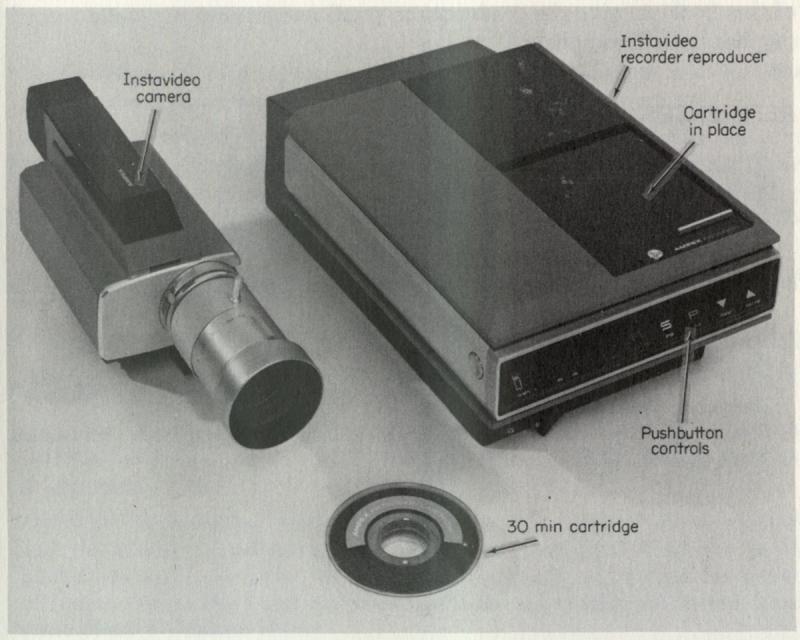
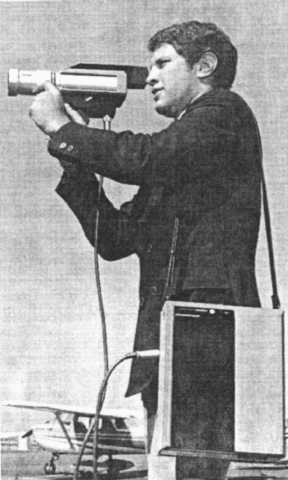 |
"Instavision": Ampex formed a working relationship
with Toshiba under the name, "TOAMCO". They introduced this model at the
Summer CES in Chicago around 1970. This group worked on the Instavsion
until the division was closed in 1972. A production model was never produced
because of the complexities and compactness required. Remember, this was
before IC's and the circuits were really tight. Also, Ampex Chicago was
losing favor with California Corporate and money was tight.
New Info & Photo 02.05.18:
The instavision system was compatible with EIAJ type 1 VTRs. Like the Sony
AV-8400, this model came as a basic B/W system, but was upgradable to color
with plug in modules. It also shares the auto threading reels used by the
Sony AV-8400. The user simply dropped the reel onto the feed platter, closed
the cover and pressed play. The machine did the rest. The system would
have made Rube Goldburg proud! The auto threading system was the same as
used in the EIAJ-2 cartridge machines with all of the same shortcomings.
The most unique feature is that Instavision had stereo sound tracks! The
basic unit weighed 16 lbs and could operate on either flashlight batteries
or rechargeable batteries. The companion B/W camera weighed 5 lbs and had
an electronics viewfinder. Photos: Matt Patoray. Info: Bill Cawlfield,
of Ampex Chicago from 1965 to 1971. |
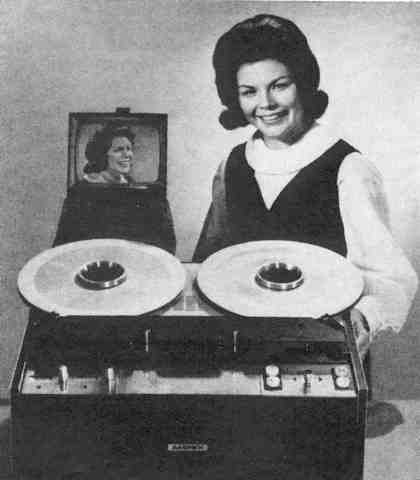 |
VR-303: - Low cost CCTV video tape recorder.
A new compact TV tape recorder designed for closed circuit systems is being
marketed by Ampex at about half the cost of previously available comparable
equipment. The recorder is priced just under $4000. The unit uses a single
stationary video head that lays a longitudinal track along the length of
the 1/4" tape which moves at 100 IPS. A 12-1/2" reel of 12,600 feet of
special 1/2 mil video tape will provide a playing time of 25 minutes. The
tape direction then reverses and another 25 minutes of playing time is
available. A reel of tape sells for $58. The video bandwidth is 250 Hz
to 1. 5 MHz. Text and photo: Electronics World Magazine, May 1965. |
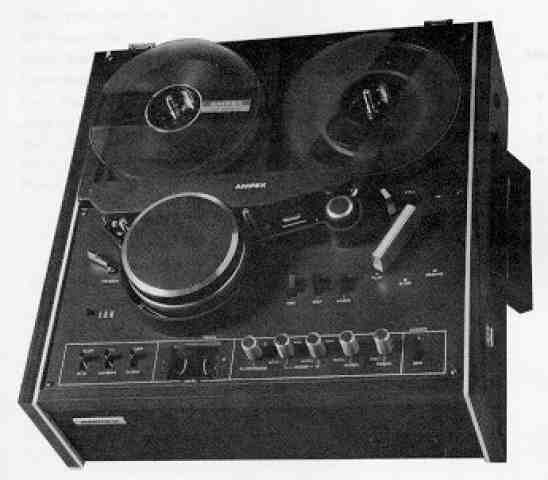 |
VR-420: - This machine was made by Toshiba-Ampex
and sold under the Ampex name. It was EIAJ 1/2 inch Type M color
with *STEREO* sound!!! The stereo sound was produced by splitting the normal
mono audio track of EIAJ Type M into two half tracks, much like VHS did
briefly before HiFi AFM recording came along. However, unlike VHS,
EIAJ Type M's 7. 5 IPS tape speed yielded good quality stereo sound. Photo
and Info: Bruce Graham. |
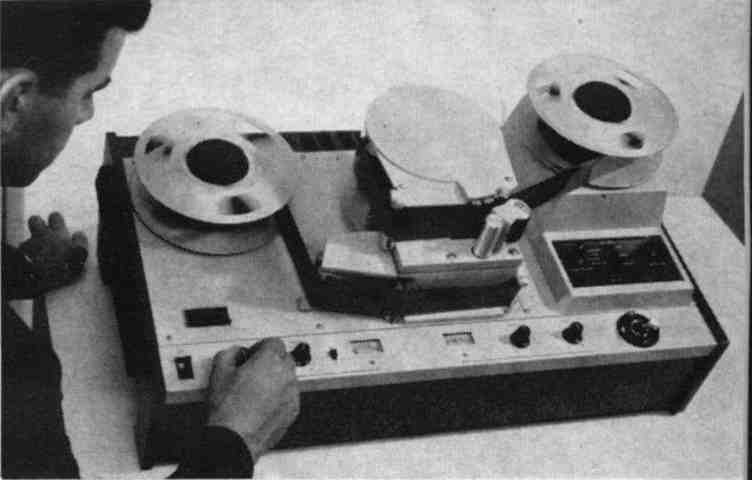
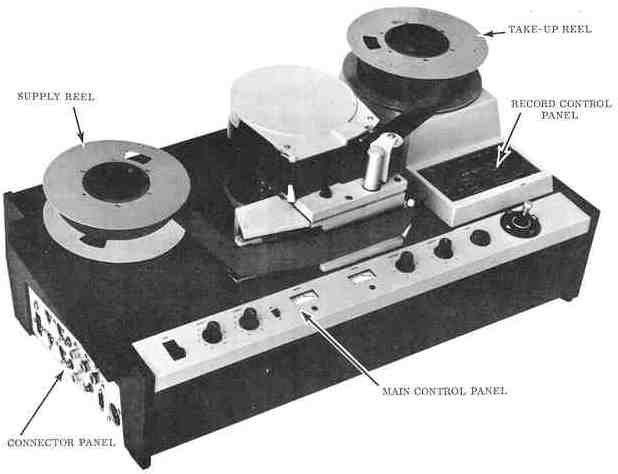 |
VR-660:
- A new portable broadcast television tape recorder, said to be priced
well below other such recorders of broadcast quality, has been introduced
by Ampex. The unit weighs under 100 lbs. and is designed for mobile and
studio use. Its price is $14,500 and is completely transistorized. The
unit operates at 3.75 IPS and can record up to 5 hours of continuous program
material on a single 12-1/2" reel of standard 2" wide broadcasting video
tape. Text and photo #1: Electronics World Magazine - December, 1963. Photo
#2 (VR-660B, circa 1966): www.eBay.com |
 |
What the heck is this?: - New
Info: I have been showing this image for years and declaring
it is an Ampex VR-1500. It may be a prototype of the 1500 or an attempt
at a lower priced consumer unit, but it looks not like the image of the
VR-1500 that follows! Perhaps it is the rumored Ampex
VR-600 or VR-650? Do you know? The following text was originally
included with this photo:
A new "portable" video tape recorder, introduced by Ampex, is one twentieth
the size and one fourth the cost of previous recorders used by TV networks
and stations. It is designed for closed-circuit use. A single head, helical
scan recording technique, instead of the formerly used transverse scanning,
provides for increased head and tape life. The fully transistorized recorder
has a tape speed of 5 IPS and records 64 minutes of programming on a single
8" reel of 2" tape. Text & Photo: Electronics World Magazine -
March, 1963.
There are a couple of problems with that description.
That is obviously NOT a one head machine. The tape wraps only half way
around the drum. Another issue is the tape speed. Both the VR-660 and the
VR-1500 run at 3.75 IPS. Also, the the tape is coming off of the wrong
side of the feed reel, opposite to that of a VR-660 or VR-1500. ~LabGuy~ |
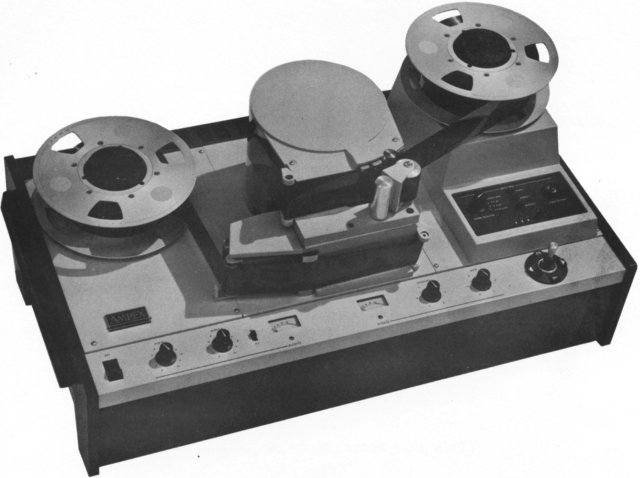 |
VR-1500: - New Info
and Photo! Notice that this VR-1500 looks exactly like
the VR-660! And they are interchange compatible! For a detailed look at
the pattern recorded on the tape, [CLICK HERE].
Photo: Ampex Service Manual |
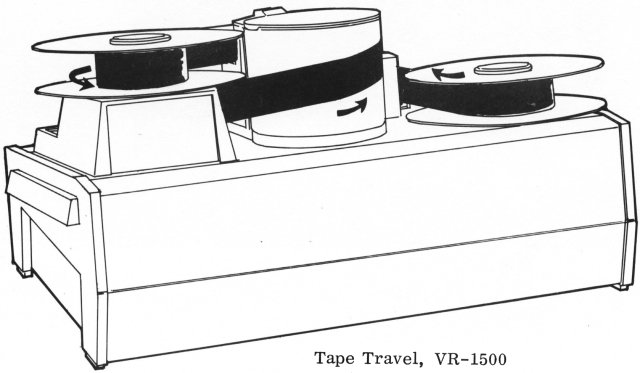 |
VR-660 and VR-1500 Tape Paths: - New
Info and Photo! A detailed diagram of the path the tape takes
around the head drum of both the VR-660s and the VR-1500. Photo: Ampex
Service Manual |
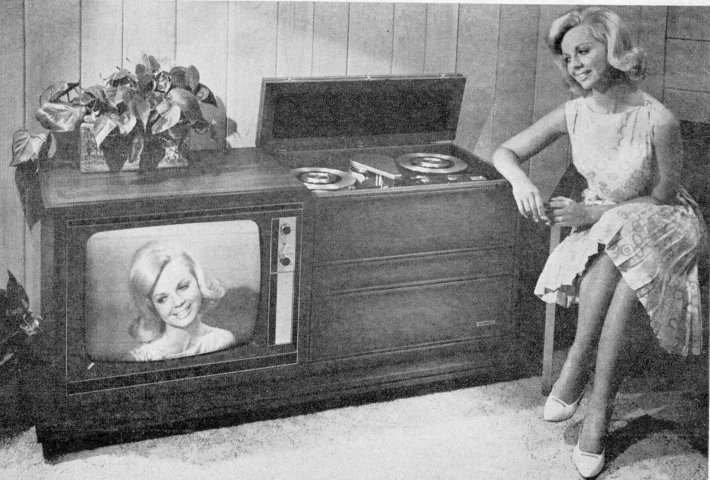 |
Ampex Home VTR's: - Type A format VTR, 1 inch
tape, 1 head, helical scan, with a built in 25 inch color TV! If you bought
one of these, the ad implies that, a beautiful woman would instantly be
your very good friend! (Heheheee!) Photo: Popular Mechanics magazine; Nov.
1965. |
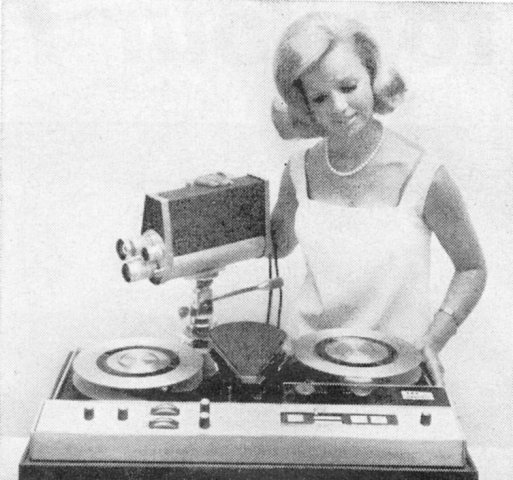 |
Ampex Home VTR's: - Type A format VTR, 1 inch
tape, 1 head, helical scan, deck only plus a vidicon camera. Let your imagination
fill in what to do with all that gear and the blonde! Photo:
Popular Mechanics magazine; Nov. 1965. |
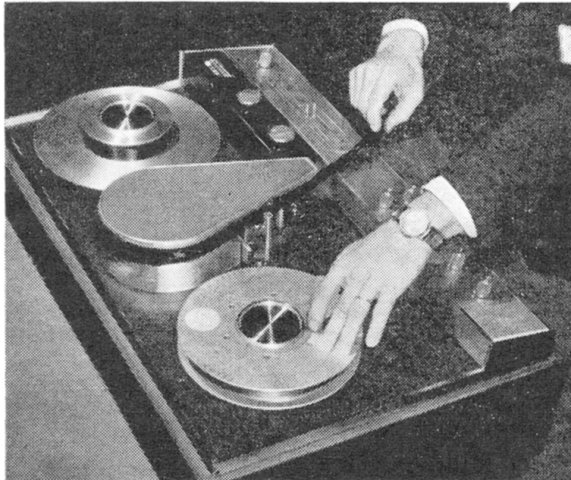 |
Ampex Home VTR's: - Type A format VTR, 1 inch
tape, 1 head, helical scan VTR's were very easy to thread, too! Photo:
Popular Mechanics magazine; Nov. 1965. |
 |
VR-5000: - Type A format VTR, 1 inch tape,
1 head, helical scan, vintage 1965. Photo: Ebay on line auction. |
 |
VP-4900 & VR-5100: - Two new compatible
video tape recorders designed specifically for use as instructional aids
in education, industry, government, medicine and to other areas have been
put on the market. The former is a playback unit while the latter is a
playback / record unit. Both units feature a video response of 3 Mhz and
a horizontal resolution of 300 lines. The video signal to noise ratio is
42 dB. A rotary transformer in the drum assembly provides increased reliability
of signal transmission from the head, according to the company. Both units
feature four minute fast forward and rewind speeds. Text and photo: Electronics
World Magazine - November, 1968. |
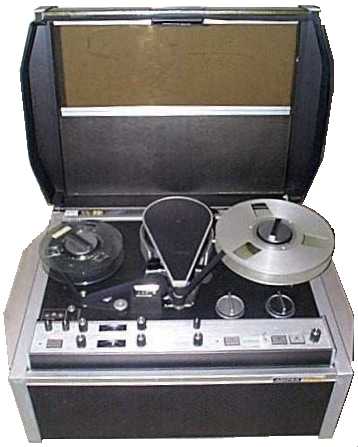 |
XVR-5800: Medical grade (that's the X in the
model number) Type A format VTR, 1 inch tape, 1 head, helical scan, vintage
196?. Photo: Gregg Wieder. |
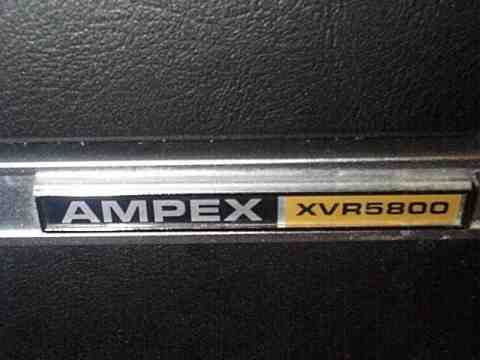 |
XVR-5800: Close up look at the Ampex label.
Photo: Gregg Wieder. |
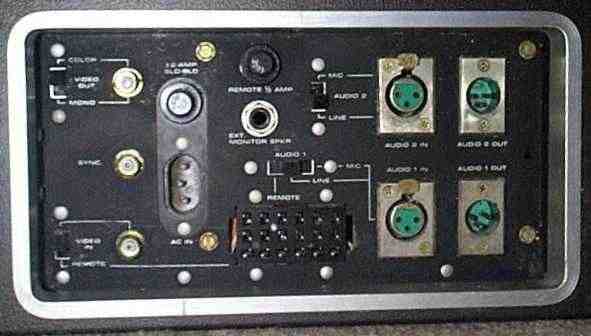 |
XVR-5800: Close up look at the connector panel.
Photo: Gregg Wieder. |
|
VR-6000: COMING
SOON! |
 |
VR6275: 1" Type A VTR, in a "consolette", vintage
1966 - Close up of the Ampex Label. This was Ampex's first "home" VTR.
This unit sold for $1450. Photo: LabGuy. Info: Electronics World Magazine
- May, 1966. |
 |
VR6275: A "Glamour shot" of the wood cabinet.
Note the old fashioned mechanical TV tuners on the left side. Photo: LabGuy. |
 |
VR6275: Another view, showing more of the tape
transport. Photo: LabGuy. |
 |
VR-6300: 1 inch tape, 1 head, helical scan,
Type A format VTR, vintage 1966. A bird's eye view of the classic Ampex
transport. Same as the VR6275 but without the built-in TV receiver. Photo:
Tim Stoffel. |
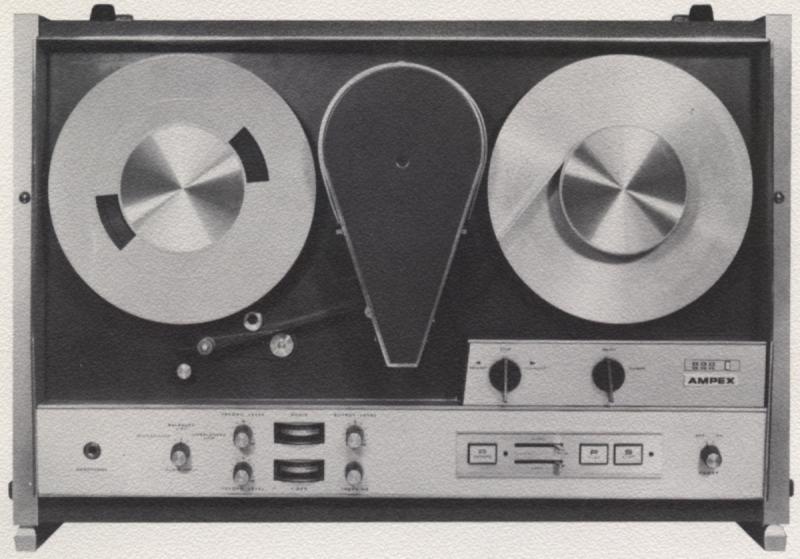 |
VR-7000: New Photos
and Info! This is a portable, transistorized VTR capable
of recording and playing back B/W video signals. Two audio channels can
be recorded from microphones ao any other audio source. It is intended
for closed circuit applications in the medical, educational, industrial,
sports and entertainment fields. Photo and info: [Ampex
Operator's Manual].
<==<<<
New!
020827 |
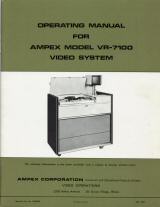 |
VR-7100: New Photos
and Info! This A roll around, self contained video studio
for classroom, shop or lab. Photo: [Ampex
VR-7100 Operator Manual].
<==<<<
New!
050226 |
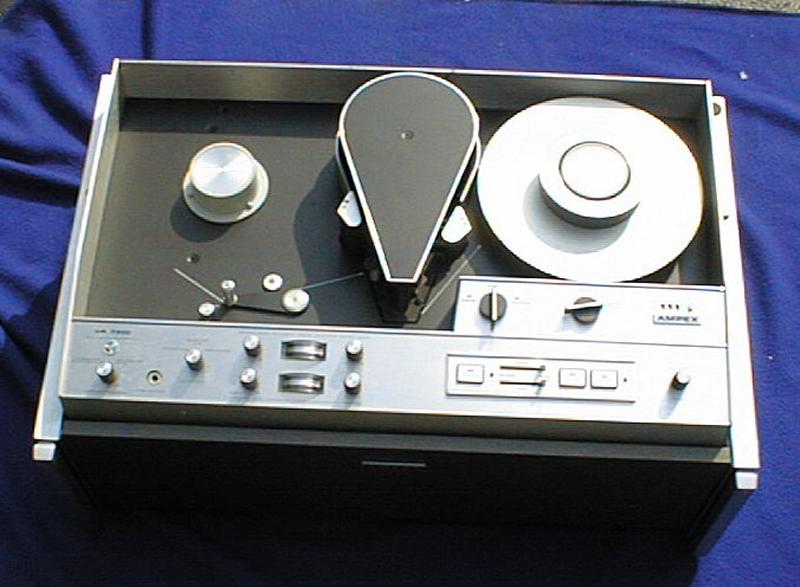 |
VR-7300: New Photos
and Info! Ampex Type A Format. 1"
tape, 1 head, alpha wrap. Manufactured by Ampex of Elk Grove Village, Illinois
in the late 1960s. High / Low band operation with color capaility in the
high band mode. For color, an external playback adapter was required.
The model number of that unit is: 7017-924 |
 |
VL-7404: A time lapse type A format VTR. Records
up to 38 hours on standard 9-3/4" reel with 3000' of 1" tape, including
video, audio and time data. Unit records continuous audio and every 32nd
field of video at .24 IPS for real time playback, or .6 IPS for compressed
time playback which is 32 times faster. Unit will also still frame for
up to 90 seconds without image deterioration. It has 3 MHz video bandwidth
and 2.5 Khz audio bandwidth. Priced at $5,900. Model year unknown. Photo
& Info: Matt Patoray. |
 |
VR-7500: New Photos
and Info! This is a portable, transistorized VTR capable
of recording and playing back both B/W and color video signals. Two audio
channels can be recorded from microphones ao any other audio source. It
is intended for closed circuit applications in the medical, educational,
industrial, sports and entertainment fields. Photo and info: Ampex Service
Manual. |
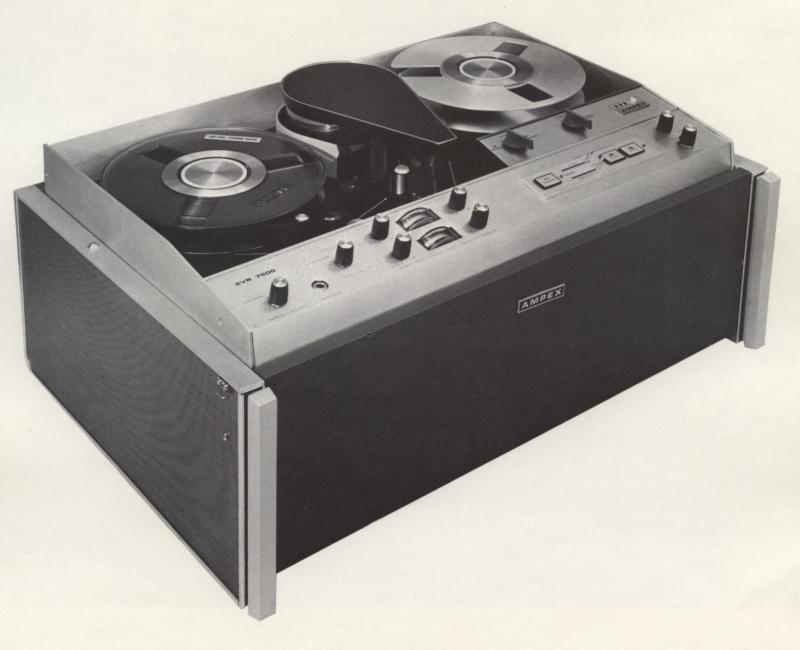 |
XVR-7500: New Photos
and Info! This is a modified version of the VR-7500 with
a new operation band (X-Ray band) replacing the standard low band. This
VTR operates with a 4.2 Mhz bandwidth allowing it to record 875 line 60
Hz video as produced by many X-Ray machines. The XVR-7500 was also available
as a wideband 525 line 60 Hz model as a factory option. To determine which
version you may have, check the model number tag on the rear of the machine.
Photo and info: Ampex Service Manual. |
 |
VR-7800: Color editing type A format VTR. Spec's:
1 video head, 1" tape, 9-3/4" reels, 9.6 IPS, 60 minutes record / playback
time, TBC option, digital tape timer. 140 pounds, $9,500 in 1968. Text
and photo: Electronics World Magazine - October, 1968. |
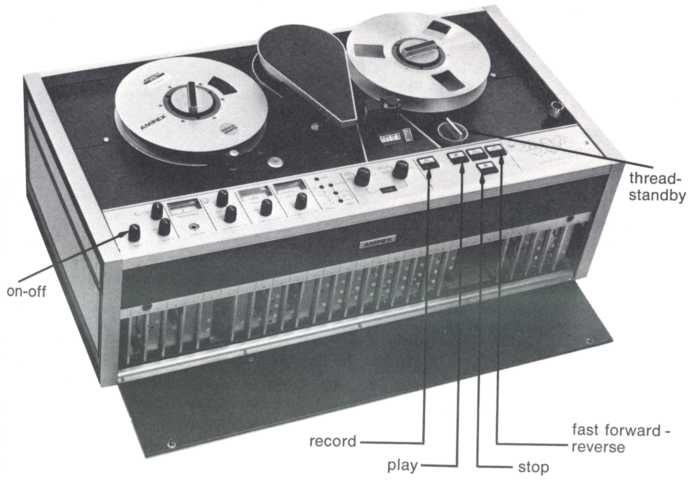
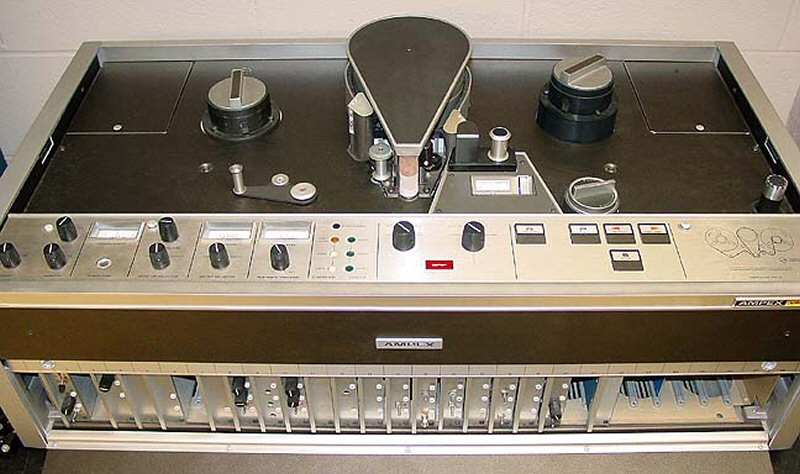 |
VPR-7900A: Color editing type A format VTR.
Spec's: 1 video head, 1" tape, 9-3/4" reels, 9.6 IPS, 60 minutes record
/ playback time, external TBC available, digital tape timer. Model year:
1975. Note the change to the VPR (viper) prefix. This machine is at the
transition point just before the introduction of the 1" type C industry
wide VTR standard. This also demonstrates the maturity of VTR's at this
point in time too. In the second photo we see Don Norwood's VPR-7900A in all its
glory! First photo & Info: Matt Patoray. Second photo, taken March, 2007:
Don Norwood. |
 |
VPR-7950A: Very similar to the previous machine,
except with a boat load of accessories like: digital TBC, broadcast style
up-right cabinet, overhead monitor bridge, etc. It was available in NTSC,
PAL and SECAM models. Model year 1975. Info: Matt Patoray. New photo, March,
2007: Don Norwood |
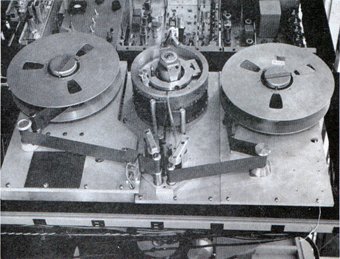
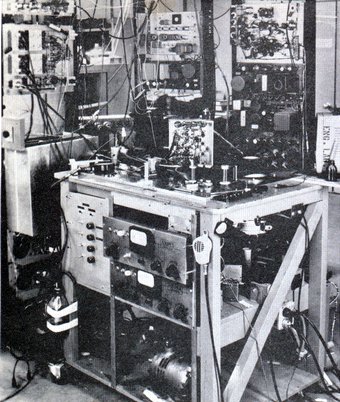 |
Prototype of the VR-8000: Here are a couple
of photos of a very early Ampex helical scan prototype VTR. Photo(s): Ampex
Corp. |
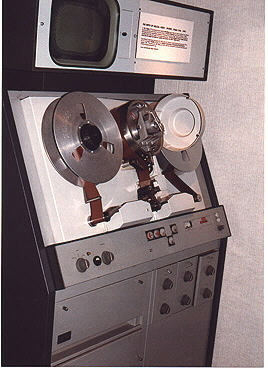 |
VR-8000: The first commercially available helical
scan VTR, sold in 1961. Used a one head scanner, with a full alpha wrap
and two inch broadcast tape. Note how closely it resembles the Ampex quadruplex
VR-1100. Photo: Don Norwood, Info: Tim
Stoffel. |
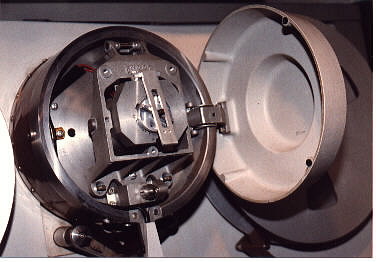 |
VR-8000: A close up look at the single head
helical scanner. Photo: Don Norwood, Info: Tim
Stoffel. |
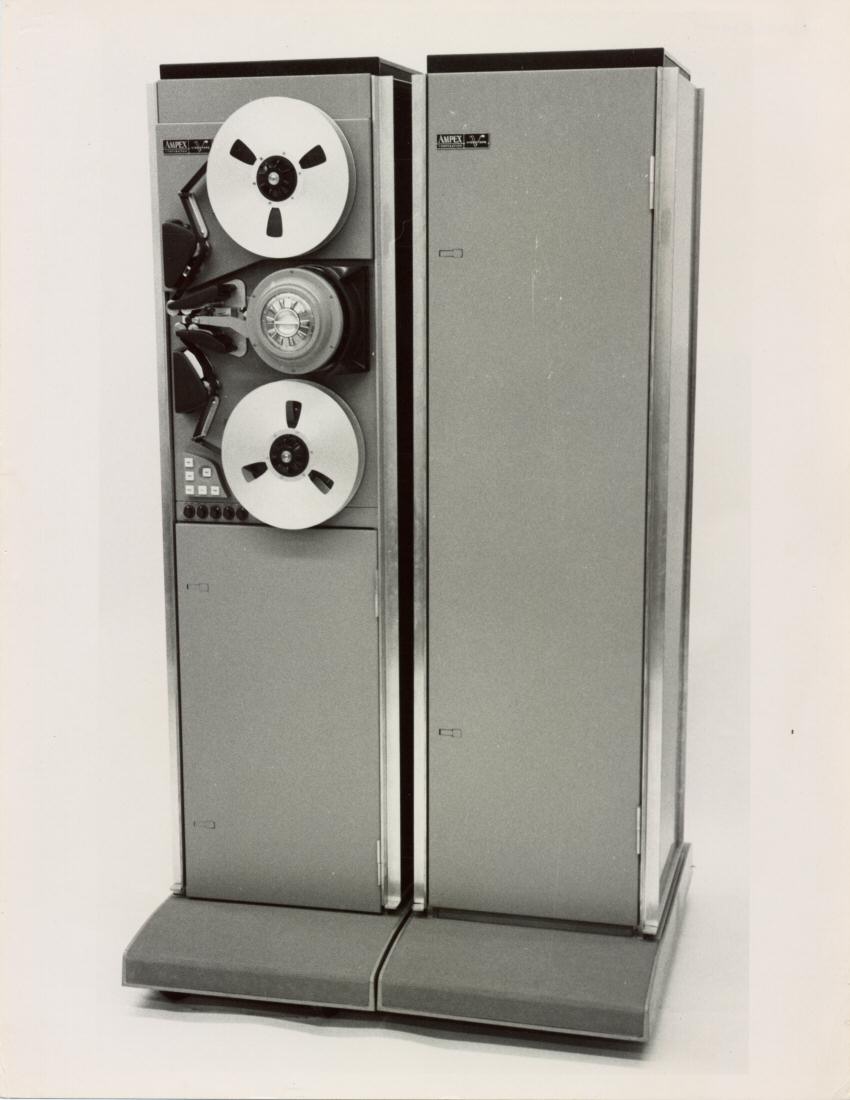 |
VR-8000: Here is the machine that was NOT shown
at the NARTB trade show in Chicago in 1958(?). Ampex shipped this guy from
California in two large black crates. Ginsburg and Anderson carried the
keys and took a different flight. It was only to be shown if another exhibitor
had a helical VTR. No one did, so the VR-8000 traveled 6000 miles for nothing.
Photo: Joseph Roizen Archive, (C)2005 Labguy's World |
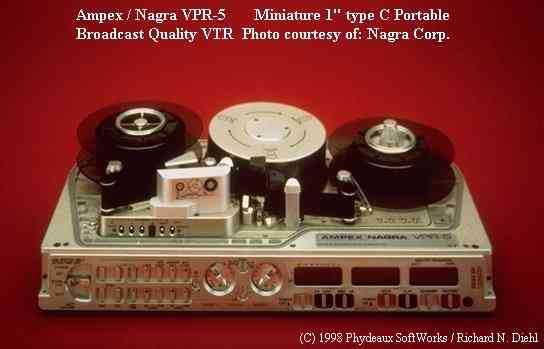 |
VPR-5: 1" Type C VTR, co-manufactured
by Ampex and Nagra. Not really a "small format" or "home" machine, but
I've included it here, for it's beauty! Photo: Courtesy
of Nagra. |
 |
VPR-80: New! 02.09.22
1" Type C production VTR. More info as it becomes available! Photo: Alf
Halonen. |
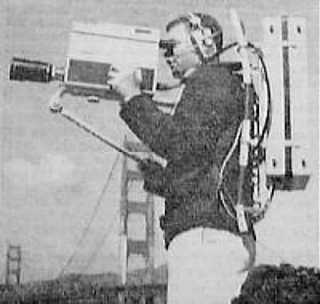
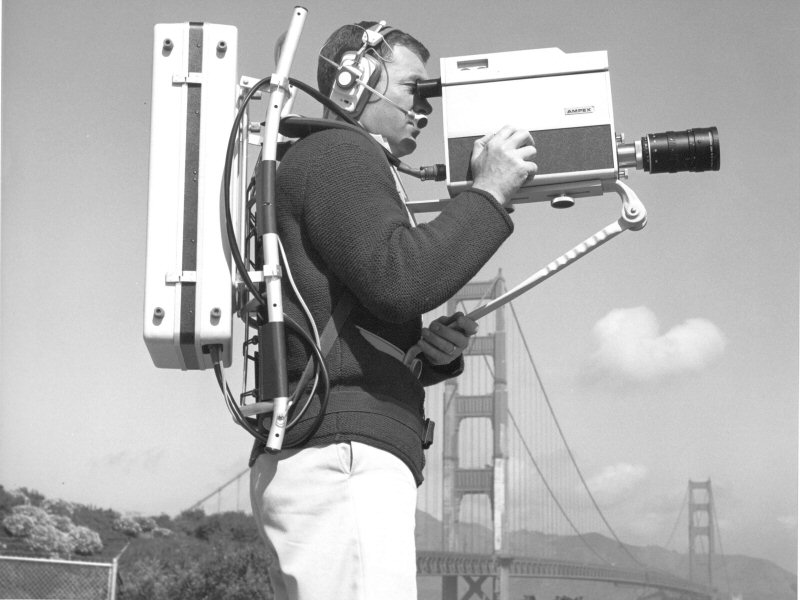 |
VR-3000: Back pack quadruplex VTR. Introduced
on March 31, 1967. Over forty years ago! Broadcast quality that could negate
your medical coverage.
Model
number of camera unknown. Possible prototype of the BC-300, according to Don
Norwood.
First photo: Electronics World Magazine. Yep! It's
backwards.
Second photo from the official press kit. This one
courtesy of Don Norwood. Thanks Don!!! |